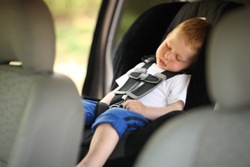Putting child passenger safety first
Vehicle safety is essential to the minimisation of accidents, injuries and in all too many cases the prevention of the loss of human life. Since the invention of the motorised vehicle this has been a priority issue. For this reason we have seen the creation of many organisations which have the sole purpose of pushing forward the agenda for better vehicle safety standards. As early as 1958 the United Nations established the World Forum for the Harmonisation of Vehicle Regulations. Many non-governmental organisations (NGOs) and politicians have since campaigned for better regulations and the industry has followed by incorporating better safety standards in vehicle design, such as the inclusion of air bags as a standard feature. It is therefore surprising that child safety regulations have taken the backseat to that of adult safety. There has been a lot of research conducted to advance the means for adult safety in the vehicle, yet little knowledge is available on methods to improve upon child vehicle safety. The CHILD research project set specific objectives which redress the balance. Its main objective was to develop injury criteria for different body regions on the child. Real life accident reconstructions were performed in crash test laboratories. The physical parameters were identified in front and side impact conditions. Out of these results the thresholds for injury were defined and injury risk curves constructed. The data can be seen as essential for the development of new test procedures which can be used to evaluate the level of protection offered by child restraint systems.



